Haircuts & Styles:
A Transformative
Guide
Discover how the right haircuts and styling can elevate your look, boost your confidence, and simplify your daily routine.
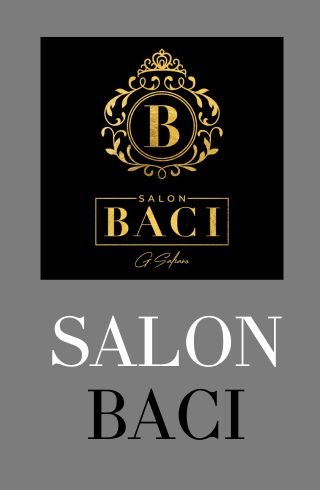
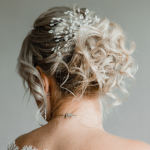
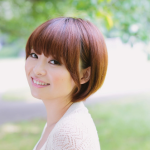
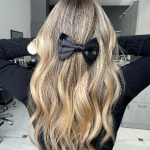
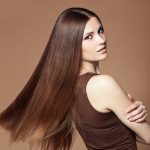

Learn how the right haircut and styling can elevate your look, boost your confidence, and simplify your daily routine. Your hair is one of the most expressive features of your identity. It’s more than just a part of your appearance—it’s a statement, a mood, and a powerful reflection of who you are.
Your hair is a powerful form of self-expression, a reflection of your personality, and often the first thing people notice about you. Finding the perfect haircuts and styling can transform not only your appearance but also how you feel about yourself every time you look in the mirror.
“Hair is the richest ornament of women.” — Martin Luther
Balancing beauty with lifestyle often means making intentional choices about how you present yourself to the world. This article serves as your trusted guide to the latest haircuts and styling trends. Our goal is simple: to help you feel confident, informed, and empowered when it comes to your hair.
The key takeaway is that understanding the latest haircut and styling trends, as well as how they fit individual needs, can help women feel more confident in their beauty choices. With expert guidance, readers can discover transformative hair services that suit their unique style and personality.
Salon Hair Cut and Styles Overview
TOPICS COVERED:
Hair Cuts and Styling Topics include:
- Haircuts & popular styles
- Face shape considerations
- The salon experience
- Pros & Cons of different haircuts
- Trending styling services
- DIY styling techniques
- Key Considerations When Choosing a Salon
- Season-Specific Strategies
- Your Hair Journey: Next Steps
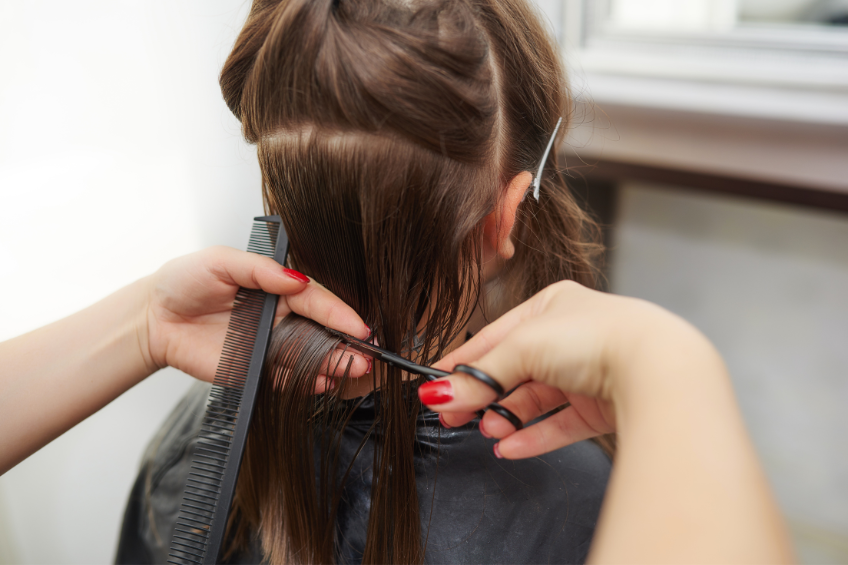
The Latest Haircuts and Styles Review
The right haircut can completely transform your look, highlight your best features, and simplify your daily styling routine. We are always mindful of this and believe it is a core value for our salon operation.
Let’s begin with some of the most popular and transformative haircuts making waves today. Each of these styles brings its own character, allowing you to express your unique self while keeping maintenance and personal preference in mind.
Popular Haircut Styles
The Modern Bob
The bob has evolved from its 1920s flapper-era origins into one of the most versatile haircuts in beauty history.
For a bolder expression, the pixie cut remains an empowering favorite. With variations like the asymmetrical pixie or the textured, choppy layers of a modern version, the pixie cut not only draws attention to your eyes and cheekbones but makes styling a breeze for those with an active lifestyle.
“The bob is like the little black dress of haircuts—it never goes out of style, but it’s constantly being reinvented.” — Edward Tricomi, Master Stylist
The Revolutionary Pixie
Today’s pixie cuts are customized to enhance individual features and accommodate different textures. The classic pixie features short hair all over with slightly longer hair on top, highlighting the eyes.
The asymmetrical pixie includes longer pieces on one side for styling versatility. The undercut pixie combines super-short sides with longer top layers.
The textured pixie incorporates choppy layers for volume and movement. The long pixie extends to the top and front sections, offering a middle ground between a traditional pixie and a short bob.
The Revitalized Shag
If effortless movement and personality are what you’re after, the shag cut delivers in spades. Updated from its 1970s origins, today’s shag embraces curtain bangs, modern layering techniques, and the popular wolf cut—a cross between shag and mullet that delivers volume and edge. The modern version features soft, feathered layers throughout with face-framing pieces.
The curly shag uses strategic layering to enhance natural curl patterns. The trending wolf cut—a hybrid between a shag and a mullet—features heavy layers on top graduating to longer ends. The curtain shag combines face-framing curtain bangs with the layered structure of a shag. The collarbone shag offers texture and movement while maintaining length.
The Sophisticated Lob
Then there’s the ever-popular lob, or long bob, which finds a perfect balance between manageability and elegance. From blunt cuts that hit right at the collarbone to layered and textured versions that provide movement and softness, the lob is both versatile and fashion-forward.
The A-line lob is slightly longer in front, elongating the neck and framing the face. The textured lob uses point cutting techniques for piece-y, lived-in movement. The curly lob enhances natural curls and waves through specialized cutting techniques.
Long Layers
And for those who love long hair but crave shape and texture, long layered cuts provide fluidity and dimension. Subtle face-framing layers or cascading waterfall layers can transform a basic length into a dynamic style that moves with you.
The long shag combines length with the textured approach of a shag. Waterfall layers cascade down, creating dimension throughout. Many choose curtain bangs with layers for a cohesive, harmonious shape.
Finding Your Perfect Cut
Choosing a haircut isn’t just about following trends—it’s about aligning your style with your features, hair type, and daily routine. Face shape plays a pivotal role in determining which cuts are most flattering.
Oval faces are the most versatile, while round faces benefit from cuts that elongate. Heart-shaped faces, square jaws, or diamond structures can each be complemented with specific layering, length, or volume placement.
Your hair texture matters just as much. Fine hair often thrives with blunt ends for a thicker look. Thick or curly hair needs shaping and layering to prevent bulk. Coily hair benefits from techniques that celebrate its natural volume and pattern.
And of course, your lifestyle has a say. A polished lob might be perfect for a professional setting, while a textured bob or shag offers freedom for someone always on the go. Short cuts like the pixie demand more frequent trims but offer a sleek, stylish, low-maintenance day-to-day experience.
Face Shape Considerations
Oval faces can generally carry off any haircut. Round faces benefit from cuts with height at the crown and length past the chin. Square faces are complemented by cuts that incorporate softness around the face.
Heart-shaped faces are balanced by cuts that add width at the jaw level. Rectangle faces appear more balanced with cuts that add fullness at the sides. Diamond faces benefit from the volume at the chin line and soft layers around the face. Pear or triangle shapes need volume at the crown and temples.
Hair Texture and Type
Fine hair benefits from blunt cuts that create the illusion of thickness. Thick hair requires strategic layering to remove bulk. Curly hair thrives with cuts designed to enhance curl patterns. Wavy hair works well with shags and lobs with subtle layers. Straight hair showcases precise cutting techniques beautifully. “Coily” or kinky hair celebrates natural texture with cuts that enhance curl definition.
Lifestyle Factors
Your daily routine determines the practicality of different haircuts. Consider your styling time commitment. You may benefit from low-maintenance options including textured bobs and styles that work with your natural texture.
Think about workplace appearance expectations, exercise habits, and how often you’re willing to visit the salon for maintenance. Pixie cuts typically require visits every 4-6 weeks, while longer styles can go 8-12 weeks between cuts.
The Salon Experience and At-Home Options
It depends on your preference and needs and there are 2 options to consider
Salon Care
Hair salons provide a relaxed and comfortable environment where people can engage in conversations and build relationships with each other.
Short cuts typically require trims every 4–6 weeks. Medium cuts last about 6–8 weeks, and longer styles can often stretch to 8–12 weeks. Proper tools and techniques go a long way in maintaining the salon finish. Whether it’s learning how to blow dry with lift at the crown or using the right size curling iron for soft waves, the key is adapting your tools to suit your haircut.
In our own case at Salon Baci we have made every attempt to enhance the type of environment based on our customer experience. For customers, the hair salon experience often involves more than just getting a haircut or other hair care services.
.jpg)
The Consultation Process
The consultation is critical for successful communication with your stylist. Bring visual references from images you have scene in fashion magazines or social media showing multiple angles and be prepared to discuss your daily routine, styling time, and product preferences. It can be both helpful and productive to familiarize yourself with basic haircut terminology and remain open to professional recommendations based on your hair’s unique characteristics and face shape.
The Haircut and Post-cut Care
The cutting process employs various techniques depending on the desired outcome. Examples would be point cutting for soft texture, slide cutting for precision with movement, razor cutting for feathery texture, and more”.
Afterward, we believe it is important to pay attention to your stylist’s techniques and product recommendations. Remember that new haircuts typically require an adjustment period as your hair settles and you develop familiarity with styling techniques. Be sure to ask you stylist at the time of your haircut any suggestions for after-cut care at home. Many salons offer complimentary touch-up appointments within 7-14 days for minor adjustments.
Home Care and Maintenance
Different haircuts and styles require different maintenance schedules. You will find that short cuts typically need refreshing every 4-6 weeks, medium cuts every 6-8 weeks, and long cuts every 8-12 weeks.
For successful home styling, invest in quality tools appropriate for your cut and select products that complement your specific cut and hair type. Learn proper blow-drying techniques, strategic product application, and quick refresh methods for second-day styling.
Pros & Cons of Different Haircuts
The following table was created to simply understand the Pro’s & Con’s
Pros: Bob Style Variations
- Versatile and timeless
- Can be customized for any face shape
- Creates the appearance of thickness in fine hair
- Generally easy to style with minimal effort
- Frames the face beautifully
Cons: Bob Style Variations
- Regular maintenance required (every 6-8 weeks)
- Limited styling options compared to longer hair
- Growing out phase can be awkward
- May require more frequent washing
Pros: Pixie Variations
- Bold, confidence-boosting statement
- Extremely quick styling time
- Showcases facial features, particularly eyes
- Works well for active lifestyles
- Can make thin hair appear thicker
Cons: Pixie Variations
- Requires frequent maintenance (every 4-6 weeks)
- Growing out process includes awkward stages
- Limited styling variations
- More dependent on regular salon visits
Pros: Shag Variattions
- Creates volume and movement naturally
- Works exceptionally well with natural texture
- Grows out gracefully
- Offers styling versatility
- Face-framing layers enhance features
Cons:Shag Variations
- Can look messy if not styled properly
- Typically requires product to define layers
- Not ideal for extremely fine, straight hair
- More difficult to pull back neatly
Pros: Lob Variations
- Balances short and long hair benefits
- Versatile styling options
- Flattering on most face shapes
- Professional yet contemporary
- Grows out gracefully
Cons: Lob Variations
- May require heat styling for polished looks
- Can fall flat without proper layering if hair is fine
- May flip out at shoulders if cut at exactly shoulder length
- Can look triangular without proper texturizing in thick hair
The Latest Trends in Styling Services
The beauty industry continues to evolve. Eco-conscious products, sustainable packaging, and cuts that embrace natural textures are taking center stage. Expect to see more lived-in layers, polished curls, and Y2K-inspired updos this year—proof that beauty is always in motion.
Revolutionary Blowout Variations
The classic blowout has evolved into specialized techniques for different hair types. The signature smooth blowout features glass-like smoothness with subtle curves.
The volume-focused blowout emphasizes lift at the roots with bouncy movement.
The beach wave blowout creates a tousled, undone texture.
Specialized techniques for curly hair either enhance natural patterns or smooth while maintaining volume. The express blowout focuses on key areas for efficient styling with professional results.
“A great blowout is the foundation of virtually every polished hairstyle. Master this technique, and you’ve unlocked endless styling possibilities.” — Jen Atkin, Celebrity Hairstylist
Modern Updos and Ponytails
The current contemporary gathered styles emphasize texture and deliberate imperfection. The textured low bun incorporates looseness for an effortless take on the traditional bun.
The elevated ponytail features strategic teasing and attention to face-framing pieces. Half-up styles combine versatility with polish. Twisted arrangements create sophisticated looks with simple techniques. Accessorized styles incorporate contemporary hair accessories from minimal clips to statement headbands.
Innovative Braids and Twists
Braided styles range from intricate designs to subtle accent details. Baby bubble braids create playful texture with small elastics creating a “bubble” effect. Accent braids incorporate small, strategic braids within looser styles. Modern French braid variations feature looser tension and deliberately pulled-out sections. Crown braids wrap around the head for sophisticated, event-ready styles. Fishtail techniques create delicate, detailed looks either as complete styles or accents.
DIY Styling Techniques
Foundational Blow-dry Mastery
Start with damp hair, apply heat protectants, and create strategic sections. Use round brushes for curves and volume, paddle brushes for smoothness, vented brushes for faster drying, and Denman-style brushes for control. Direct airflow downward for smoothness, upward for volume, and outward for gentle body. Adjust heat levels according to hair type—higher for thick textures, medium for normal hair, and lower for fine or damaged hair. Always finish with a cooling shot to set your style.
Curl and Wave Creation
Section size determines curl tightness; smaller sections create tighter curls; larger sections produce looser waves. Barrel size affects curl diameter, with narrower barrels creating tighter spirals. Use the lowest effective heat setting and allow sections to cool completely before manipulating them.
For heatless options, try modern versions of rag curls and pin curls or specialized heatless tools designed for overnight use. The direction of your curls impacts the overall look—away from the face for open, voluminous styles; alternating for natural, beachy effects; and uniform for classic, vintage-inspired looks.
Updo Construction
Create a secure foundation through strategic teasing, product layering for grip, and proper anchor points identification. Learn to secure styles without damage using proper bobby pin placement, elastic alternatives, and crossing patterns for tension without pulling. Ensure visual balance by adjusting height and width based on face shape and incorporating face-framing pieces. Perfect the details by smoothing flyways, creating intentional texture, and disguising joining points.
Tools & Products Guide
Quality heat styling equipment should offer consistent temperature control, multiple heat settings, and safety features.
Different hair types require specialized product formulations—lightweight options for fine hair, smoothing formulas for thick hair, moisture-balancing products for curly hair, and protective formulations for damaged hair.
Master proper product application through appropriate layering strategy, distribution methods, and avoiding common mistakes like over-application
Tools and Product Guide
Quality heat styling equipment should offer consistent temperature control, multiple heat settings, and safety features.
Different hair types require specialized product formulations—lightweight options for fine hair, smoothing formulas for thick hair, moisture-balancing products for curly hair, and protective formulations for damaged hair.
Master proper product application through appropriate layering strategy, distribution methods, and avoiding common mistakes like over-application.
Pros & Cons of Different Styling Methods
Pros: Heat Styling
- Creates precise, polished results
- Works quickly
- Offers versatility across different looks
- Provides longer-lasting hold
- Allows significant transformation from natural texture
Cons: Heat Styling
- Causes progressive damage with regular use
- Requires protective measures
- Results vulnerable to humidity
- Requires tool maintenance
- Can cause color fading
Pros: Air-Drying and Heatless Methods
- Healthier for hair long-term
- Environmentally friendly
- Requires fewer products
- Zero heat damage risk
- Can enhance natural texture
Cons: Air-Drying and Heatless Methods
- Less predictable results
- Longer processing time
- May lack polish for formal occasions
- More vulnerable to frizz
- May require overnight preparation
Finding the Right Salon
Key Considerations When Choosing a Salon
It is interesting to note that today, “While it’s difficult to pinpoint an exact percentage, a significant majority of women use hair or beauty salons, with studies indicating that 72% of women use professional care services. (1)
There are good reasons for the popularity and value of using beauty salon services for haircuts and styles given the high percentage of women relying on them. This points to the importance of finding the right salon to meet your unique needs.
Choosing a salon is as important as choosing a style. Look for stylists with clear communication, visible experience, and a willingness to listen. Steer clear of salons that feel rushed, upsell without cause, or hesitate to answer your questions.
A good stylist becomes a long-term partner in your hair journey. Over time, they’ll learn how your hair behaves across seasons, which styles you gravitate toward, and what truly brings out your best features.
“The relationship between a woman and her hairstylist is closer than the average marriage.” — Loretta Young
Stylist Expertise and Salon Policies
Inquire about training background, specialization areas, and experience with styles similar to what you’re seeking. Review examples of their work and ask about signature techniques. Understand the salon’s consultation approach, pricing structure, and policies regarding follow-up adjustments. Their approach to maintenance support and home care education reveals their commitment to client satisfaction.
Red Flags to Watch For
Be alert to warning signs, including dismissive consultations, reluctance to show previous work, excessive upselling, vague pricing, outdated knowledge, poor cleanliness, negative atmosphere, consistent overbooking, high staff turnover, inadequate tools, unwillingness to listen, lack of clarifying questions, unrealistic promises, and vague home care guidance.
Building a Relationship with Your Stylist
Use visual references, express concerns constructively, provide balanced feedback, and share relevant lifestyle factors. Over time, your stylist or hairdresser builds understanding of your hair’s unique characteristics, guides style evolution, and may offer preferential booking and tailored recommendations.
“The relationship between a woman and her hairstylist is closer than the average marriage. A woman will tell her hairstylist things she wouldn’t even tell her therapist!” — Loretta Young
Recognize when it might be time to explore new options—after consistent disappointment, communication breakdown, evolving needs, or practical considerations like relocation.
Season-Specific Strategies
Summer:
Adapt to heat and humidity with strategic layers, shorter lengths, and weight removal techniques. Embrace heat-free styling, anti-humidity products, and protective styles. Focus on UV protection, damage mitigation, and scalp care.
Fall:
Refine your shape after summer damage, plan for holiday styling versatility, and balance summer lightness with winter warmth. Reintroduce heat tools, incorporate deeper conditioning, and implement static control techniques.
Winter:
Maintain strategic bulk for warmth, adopt hat-friendly shapes, and use static-minimizing techniques. Employ moisture-sealing methods, static-control products, and overnight protection from friction and dryness.
Spring:
Assess winter damage, embrace fresh shapes for changing weather, and plan growth patterns for summer. Gradually lighten products, transition between seasonal styling methods, and implement restoration treatments.
The Latest Innovations and Trends in Hair Styling
Innovations in Haircuts and Styling
- Virtual Reality Consultations:
- Personalized Experience: Salons are starting to use virtual reality to help clients visualize haircuts before committing, enhancing the consultation process and reducing decision anxiety.
- Customization: This technology allows for a more personalized experience, enabling clients to see how different cuts would look on them without the need for physical changes.
- Sustainable Haircutting Techniques:
- Eco-Friendly Practices: There’s a growing emphasis on sustainable practices in salons, including reducing waste and using eco-friendly tools. Highlighting these practices can appeal to environmentally conscious clients.
- Texture-Focused Cuts:
- Celebrating Natural Texture: The industry is shifting towards embracing and enhancing natural hair textures, such as curls and waves. Salons are refining their expertise in cutting and styling textured hair.
Tools and Products: Smart Choices for Beautiful Results
Invest in a few high-quality styling tools and products tailored to your hair type. Heat styling can be transformative—but only when used wisely. Always apply heat protectants, use adjustable heat settings, and finish with a cool blast to lock in the look.
- Choosing the right products—volumizers, smoothing creams, curl enhancers, or lightweight sprays—can make the difference between a style that lasts and one that falls flat. Layer products strategically, and avoid applying too much too quickly.
Sustainable Styling Products:
-
- Eco-Friendly Formulations: There’s an increasing demand for sustainable, eco-friendly styling products that are gentle on hair and the environment. (2)
Your Hair Journey: Next Steps
[Suggested image: A woman looking confidently in a mirror]
Your relationship with your hair evolves with your life, style, and the changing beauty landscape. Develop your personal style by identifying what consistently works well, creating an inspiration collection, and discovering signature elements. Make conscious choices about services and products by defining your priorities, strategically allocating your budget, and distinguishing between marketing and genuine needs.
“Hair does not make the woman, but good hair definitely helps.” — Author Unknown
Join the Conversation
We invite you to continue exploring the world of haircuts and styling with us at Salon Baci in Cincinnati. Your journey is unique, and we’re here to support it with expertise, insight, and inspiration.
What has been your most transformative hair moment? What questions do you still have about finding your perfect cut or mastering a particular styling technique? Our team of professional stylists welcomes your questions and is committed to helping you achieve your hair goals.
Your hair tells a story. Make it a story you love.

ADDITIONAL RESOURCES:
- For more resources of interest from Salon Baci, visit our Baci Beauty Salon Home Page
REFERENCES
- Trafft: https://www.lorealparisusa.com/beauty-magazine/hair-style/hairstyle-trends/shag-haircuts-and-shaggy-hairstyles
- Eco-friendly options
Image Sources: Canva
- Header Hairstyle images;
- by Екатерина Шумских from Pexels,
- Pixie_ by Nicolas McComber from Getty Images Signature
Graphics: Created in Canva.com
Image: n/a
Article Content Development and AI: Refer to Terms & Conditions Page
Copyright 2025 | Salon Baci | All Right Reserved
